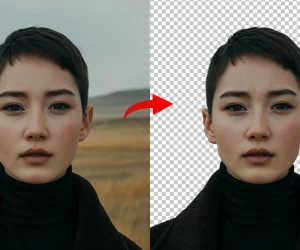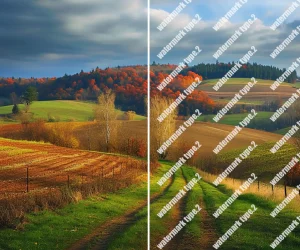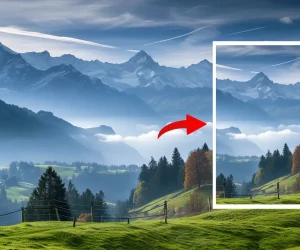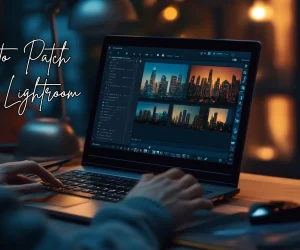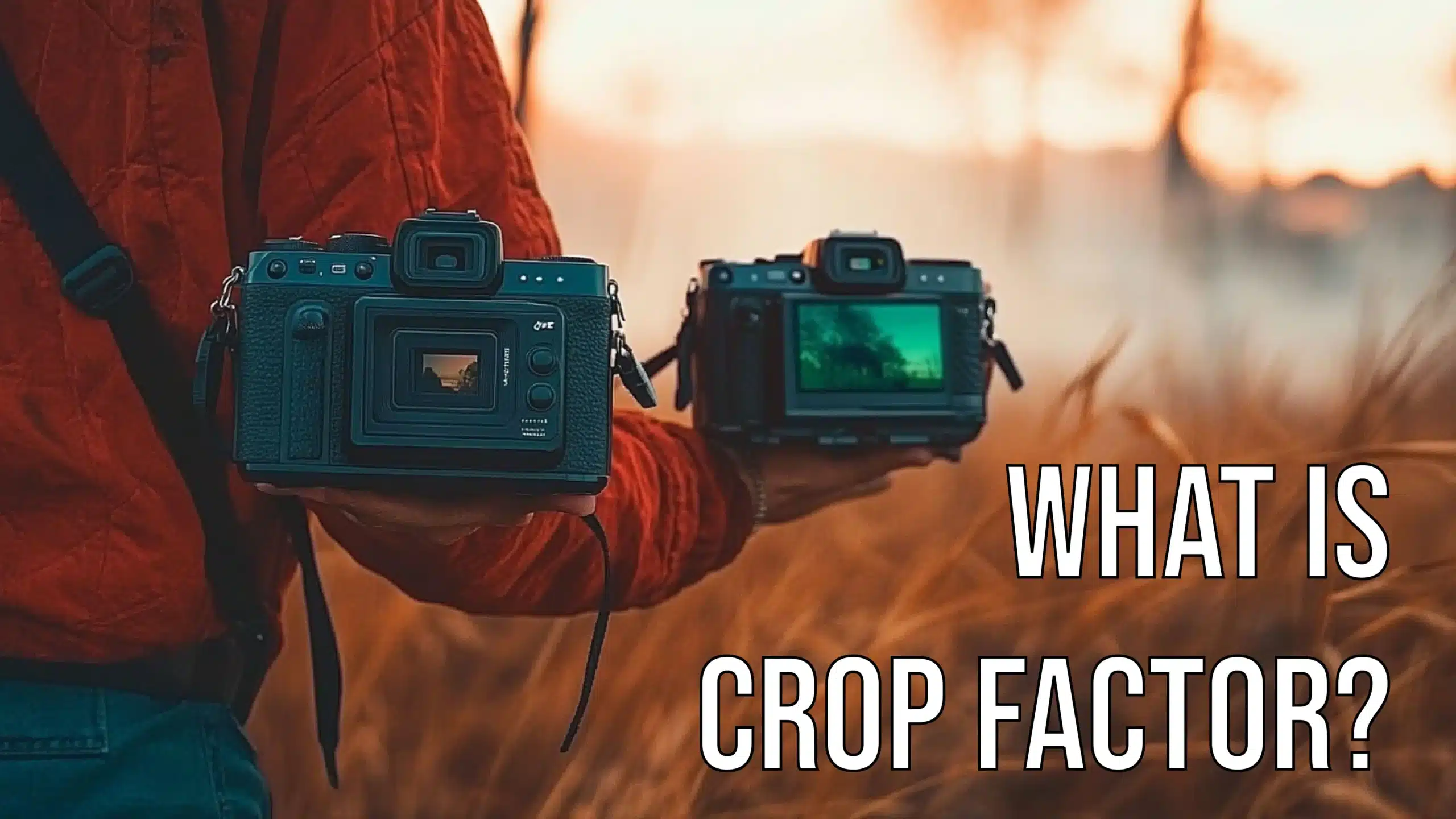
When I first stumbled upon the “crop factor” concept, I realized how pivotal it is in shaping our photography journey.
Have you ever wondered why your images sometimes don’t seem to capture the whole scene you envisioned?
That’s where understanding crop factor becomes important. Imagine transforming your photography skills by knowing how this factor influences your shots. The excitement of expanding your creative horizons is just a read away.
Join me as we delve deeper into this topic, uncovering how the crop factor affects your camera’s field of view and, ultimately, your artistic expression.
Let’s explore the nuances and unlock the potential of your photography together!
Table of Contents
What Does Crop Factor Do?
The crop factor determines the field of view in cropping situations. It refers to how a camera’s sensor size compares to the 35mm film format.
Using a full frame camera, the crop factor equals one. However, different digital cameras use smaller sensors, changing the perceived focal length.
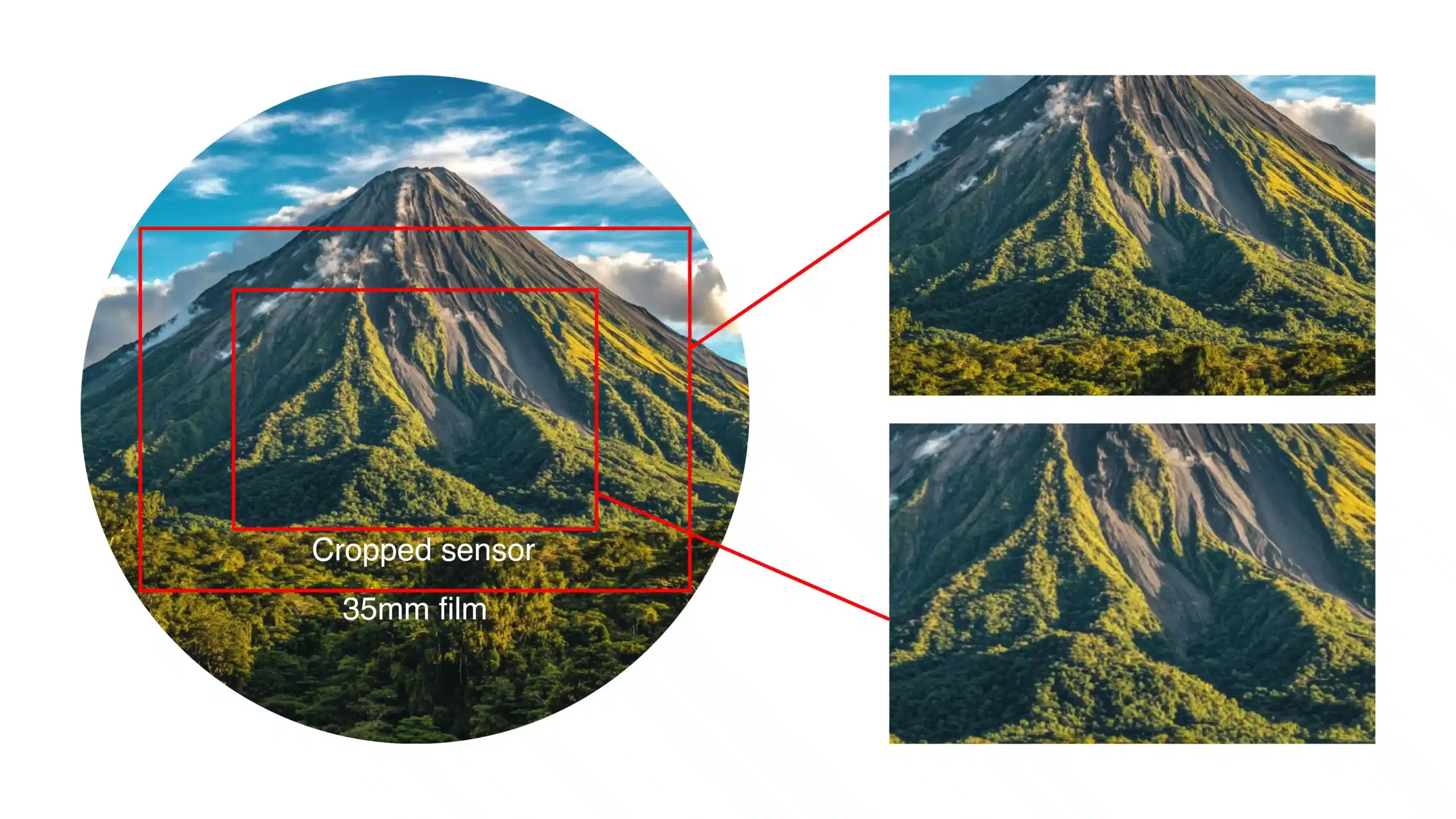
How Crop Factor Affects Your Images
Photography with a crop sensor camera influences the final image. The crop factor works as a magnification tool.
What does this mean?
It provides more extended focal length views without needing a telephoto lens. For instance, a 50mm lens appears to be 75mm on a crop sensor with a 1.5x crop factor. So, you can see why people like using crop sensors.
Crop Factor and Focal Length
Understanding the crop factor and how it affects focal length can change the way you see your photos. Let’s explore how these two elements are connected and what impact they have on your final images.
Relationship Between Crop Factor and Focal Length
The crop factor directly multiplies the focal length. This happens with the use of crop sensors. If you attach the same exact lens to two different cameras, you’ll notice equivalent focal lengths differ.
That’s due to the camera’s crop factor, which impacts the image’s appearance and alters it from the expected results.
Calculating Effective Focal Length
- Determine your camera's exact focal length.
- Multiply by the camera's crop factor.
- For example, a 24mm lens on a camera with a 1.6x crop factor yields a 38mm equivalent focal length.
Pro Tip: Don’t forget their ability to bring distant subjects closer. It’s like having a zoom without switching lenses. Now, grab your digital camera and get creative today!
If you’re considering which different digital cameras to choose, understanding crop factor can significantly influence your decision.
Comparing Crop Sensor and Full Frame Camera
- Full-frame cameras use a sensor equivalent to the size of 35mm film.
- Crop sensors are smaller, affecting the field of view and the focal length multiplier, which leads to a longer focal length.
The crop factor in crop sensors changes the view compared to the same lens on a full frame. For example, a 50mm lens on a crop sensor with a 1.5x crop factor looks like a 75mm lens on a full frame.
This can be useful for different types of photography, especially when using wildlife photography equipment, where a magnified view is beneficial.
A frame tool guide can also help you visualize and utilize these adjustments effectively in your compositions.

Advantages of Full Frame Cameras
These cameras have their unique perks:
- Due to their larger sensors, they capture more light, leading to improved image quality, especially in low light.
- Photographers often love the depth of field control they provide.
- Their sensors offer a better dynamic range and detail.
- They are preferred by professionals who need high-quality images.
- Their lenses are designed to work well with these cameras, maximizing their potential and providing the best experience possible.
When to Use Crop Sensor Cameras
A crop sensor camera is ideal for photographers wanting a magnified view without spending on expensive telephoto lenses. They are perfect for:
- Sports and wildlife photography.
- Travel, due to its compact design, fits into smaller bags.
Another benefit is the cost; they tend to be more affordable. They’re a great entry point into digital cameras while delivering good image quality.
Choosing the Same Lens for Different Cameras
When using the same lens on different cameras, the crop factor can greatly influence how the lens performs. Let’s take a closer look at how this affects your choice of lens and the resulting images.
This table highlights the impact of crop factor on lens choice, provides tips for selecting the right lens, and emphasizes the benefits of experimentation in photography.
| Aspect | Overview |
|---|---|
| Adapting Lenses for Different Camera Types | Explore how adapters allow for using various lenses across camera systems, enhancing flexibility. |
| Impact of Crop Factor on Lens Choice | Understand how crop factor affects the effective focal length and overall composition. |
| Lens Selection Tips | Consider what you typically shoot and choose lenses that match your photography style. |
| Experimenting with Different Lenses | Using various lenses provides an opportunity to explore new creative perspectives in your photography. |
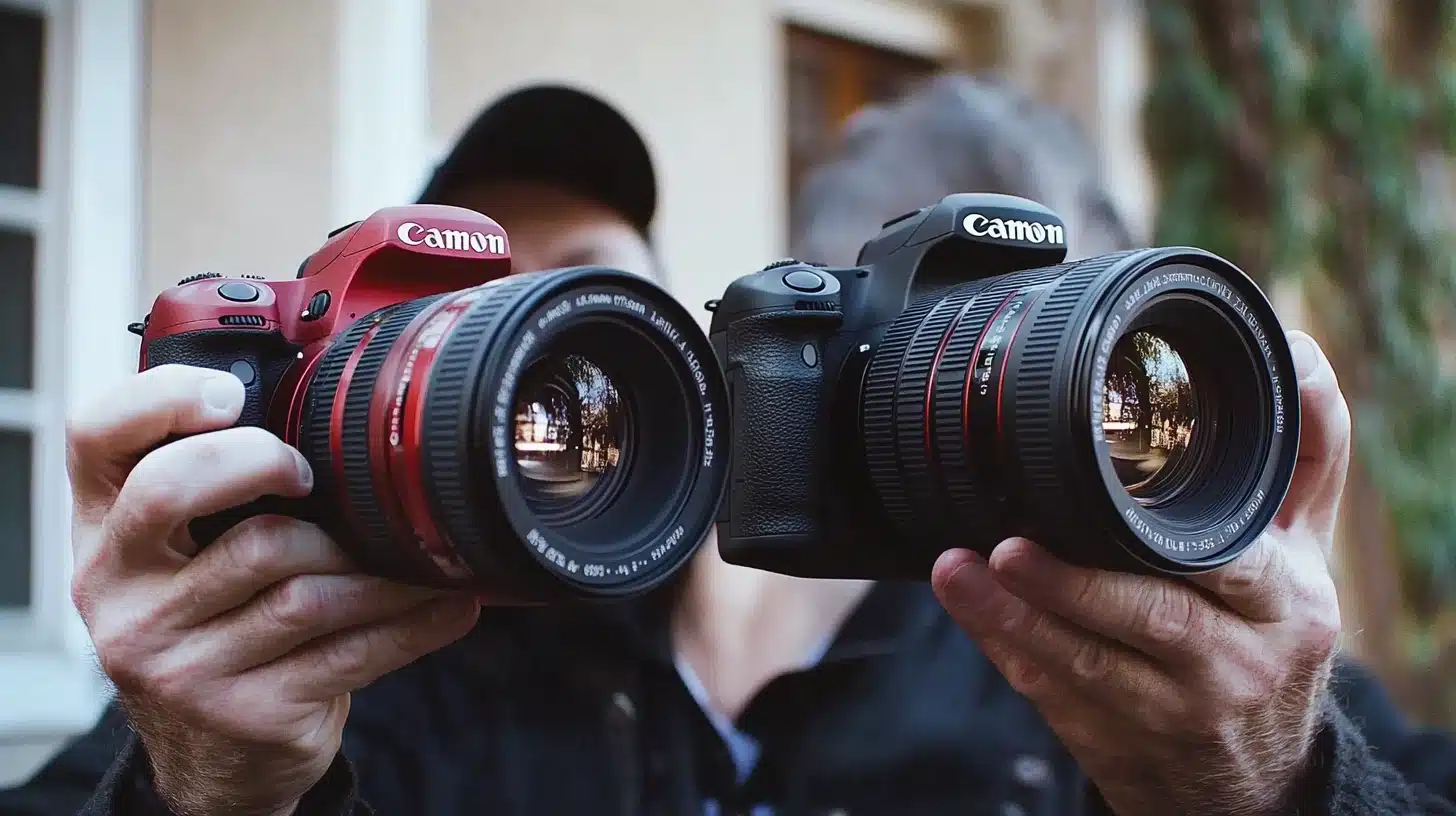
Impact of Crop Factor on Lens Choice
The crop factor plays an important role when selecting different types of lenses for different cameras. Imagine you’re using a lens that works wonders on a full frame.
However, you soon discover that the field of view changes dramatically on a crop sensor camera. This occurs because the sensor size is different from standard 35mm film. The crop factors, which photographers must account for, effectively alter the focal lengths.
For instance, a lens with a given focal length of 50mm acts more like an 80mm lens on a camera with a 1.6x crop factor. The math behind this involves calculating crop factor by comparing it to the traditional 35mm format.
Hence, depending on the camera’s sensor size, every lens offers a unique equivalent focal length, whether it’s a 35mm or 50mm lens.
Adapting Lenses Across Different Camera Types
Interestingly, adapting lenses can offer flexibility. You’d assume that sticking a lens from a full frame onto compact cameras would cause mayhem.
But it doesn’t have to be that way.
Thanks to adapters, photographers easily migrate lenses from one camera body to another. These adjustments might affect the effective focal length, but consider it from another perspective: it’s an opportunity to experiment.
Adapters also let you use lenses meant for a medium-format sensor on a smaller sensor. It’s like fitting a square peg into a round hole with satisfactory outcomes.
Tips for Lens Selection
- Start by thinking about what you usually shoot. Portraits? Look at common focal lengths that offer the same angle across cameras.
- Wildlife? You might need a lens with a longer focal length for better reach.
- Understand your camera's crop factor as well. Knowing whether you want the exact focal length or its equivalent focal lengths helps in decision-making.
- If you shoot variations, consider a lens that thrives across various scenarios.
- Match lenses with the primary intent of achieving the same image quality across platforms.
Pro Tip: When mixing brands or camera models, use digital tools to assist. Software functionalities adjust for variations in the lens and camera body combinations.
For instance, learning how to crop in Photoshop can enhance your images further. You might also explore free crop Photoshop options to make quick adjustments that fit your creative vision.
Maximizing Your Photography
Crop factors play a sneaky role in photography. It’s not just a tech term for nerds. Crop factors affect how you choose lenses and capture photos.
Creative Uses
Sip your coffee and learn why crop factor matters. The focal length appears longer on a crop sensor (smaller than 35mm film). It’s like getting a close-up without stepping forward.
Want to shoot wildlife but can’t afford a long telephoto lens? Use a crop sensor camera body.
The magnification factor works to your advantage, which is particularly useful for how to edit wildlife photos since birds don’t pose for selfies. Think creatively.
Compact cameras with crop sensors are pop stars here. Smaller size, significant impact. They’re travel-friendly.
But watch it! The crop factor alters the equivalent focal length. A 50mm lens becomes more like 75mm. This can work for you in tight spaces. Play around with angles and consider using layer color swap techniques in your editing to enhance your images further.
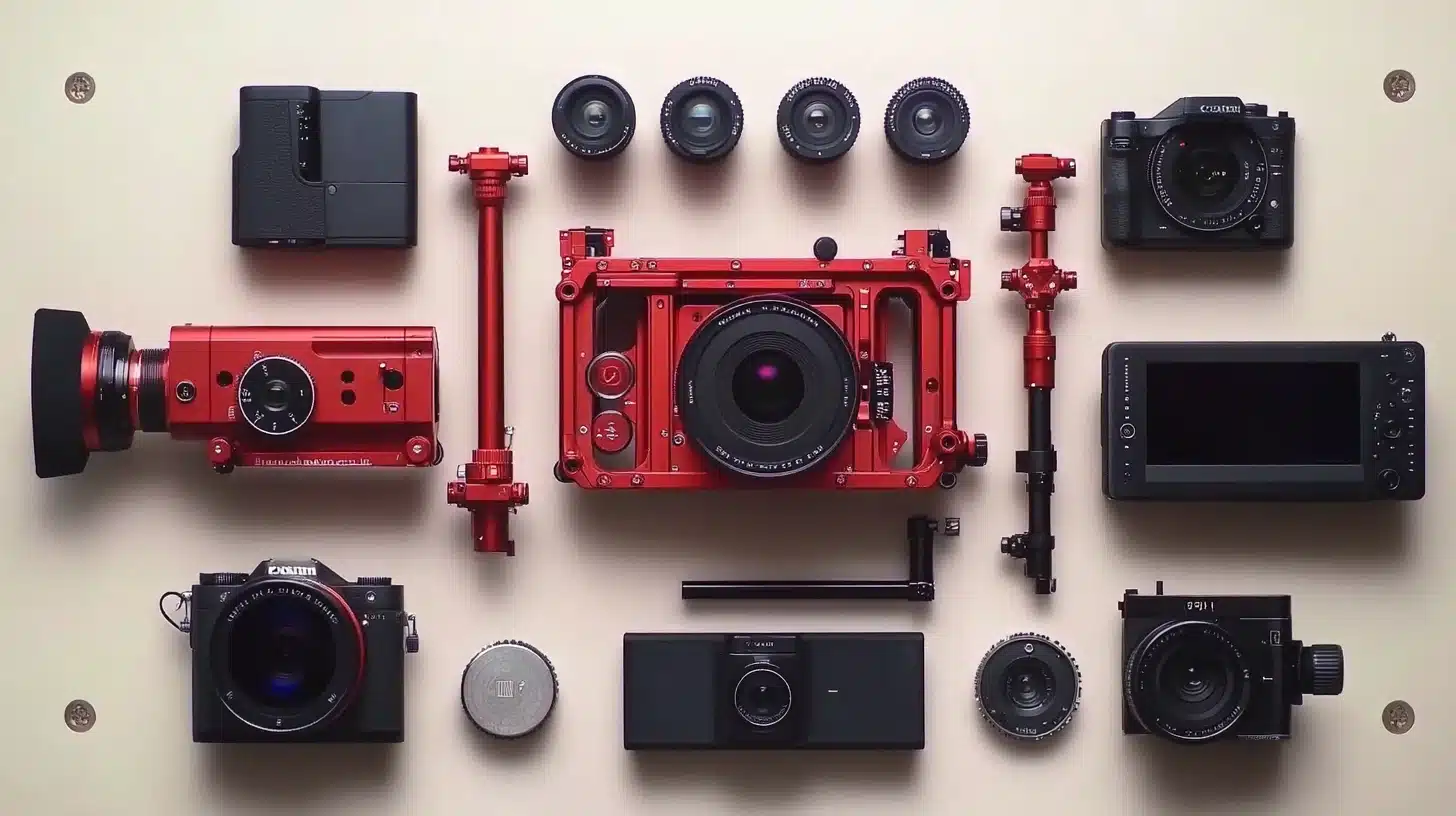
Common Mistakes to Avoid
Don’t panic if the crop factor makes the frame look different. It’s not witchcraft; it’s science. Calculate the equivalent focal length first.
Also, mixing full-frame lenses with crop sensor ones can result in surprises. Your 35mm lens might give a focal length you didn’t expect. Waste less time blundering and more time creating.
Another challenge arises when switching between different models with varying common crop factors. Each has its magnification factor. Jot down the factor or bookmark it. It’s smart prep work, like packing extra film rolls when using actual 35mm film. Anticipate the surprises.
Think of how that affects panoramic landscapes. If you’re often capturing wide scenes, consider investing in specific landscape cameras.
Pro Tip: For those looking to refine their skills further, learning about Lightroom shortcuts, such as the crop shortcut, can streamline your editing process and enhance your final images.
Additionally, understanding the difference between Photoshop and Lightroom can help you decide which software best suits your post-processing needs, allowing you to maximize the potential of your photographs.
Frequently Asked Questions (FAQs)
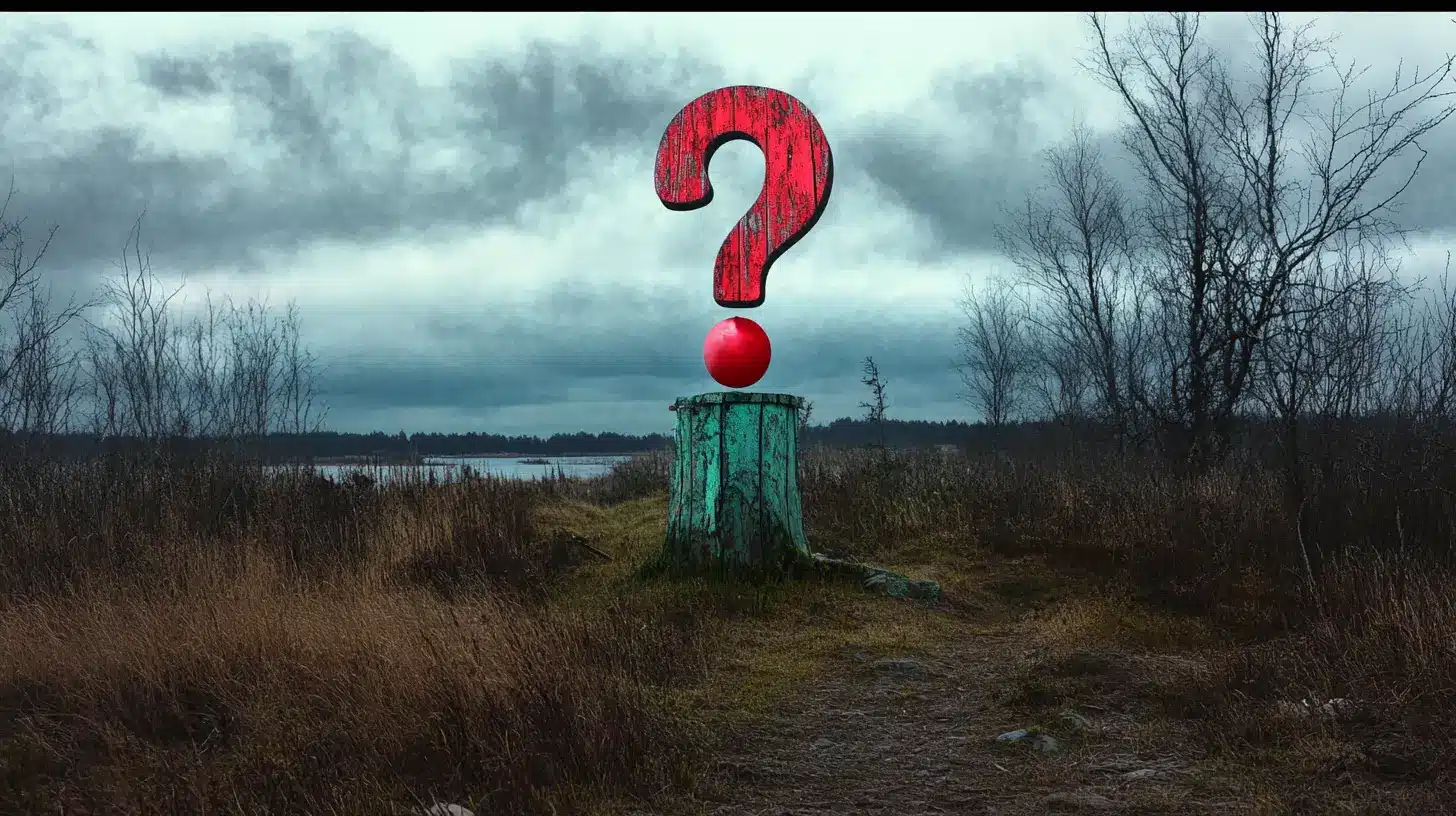
What does the 1.5 crop factor mean?
The 1.5 factor is a term used in photography to describe how much smaller the image sensor is compared to a full-frame 35mm sensor. With a 1.5 crop factor, the sensor is 1.5 times smaller than the 35mm film size. This affects the field of view, narrowing it by a factor of 1.5.
What is the crop factor for dummies?
This term refers to the difference in size between a camera’s image sensors and a 35mm film frame. Here’s a simple breakdown:
- Smaller Sensor: Most non-full-frame cameras have smaller sensors.
- Magnification: This smaller size 'resizes' the image, making objects appear closer or more significant than they do with a full-frame sensor.
- Calculation: It's calculated by comparing the sensor's diagonal size to a full-frame sensor (about 36mm by 24mm).
How to calculate crop factor?
You can follow these steps:
- Step 1: Measure the diagonal of your camera's sensor.
- Step 2: Know the diagonal of a full-frame sensor, typically about 43mm.
- Step 3: Divide the full-frame sensor's diagonal by your sensor's diagonal.
This will give you the crop factor of your camera.
Is crop factor good?
Whether it’s good or not depends on your photography needs:
- Advantages: It can make telephoto shooting more effective by giving a more significant reach without needing a longer lens.
- Disadvantages: It can also limit wide-angle capabilities because the same wide-angle lens will have a narrower field of view than a full-frame camera.
Conclusion
Understanding the crop factor has really transformed how I approach photography. It’s helped me choose the right lenses and achieve better compositions for every shot.
Whether it’s a sweeping landscape or a close-up portrait, knowing how the crop factor influences my camera has improved the quality of my images and made my gear work better for me.
If you’re ready to dive deeper into photography concepts like crop factor, I encourage you to check out my Photoshop Course and Lightroom Course. They’ve been game-changers for me, and I know they’ll help you grow your skills.
For even more advanced photo editing, try Adobe Photoshop and Adobe Photoshop Lightroom. These tools have made a big difference in my work, and can do the same for yours.
Give it a try, and see how understanding crop factor can take your photography to the next level!
Read more about Photoshop:
Course
Light Effect Photoshop
Lightroom Course 2025
Adobe Photoshop Course 2025
Photo Editing Course
Get the latest version of Photoshop & Lightroom



